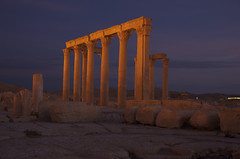In the middle of the day today when I could have crystallized that protein that has been resisting too long or cloned a version more amenable to structural work, I had to go over to the Learning Centre for an X-ray Safety Awareness course. I had enough before the course even started.
I had had enough, truth be told, when a rumor first surfaced about this course. Attending it would be a requirement for continued work in the x-ray suite, even for those who enter the facility merely to appraise their crystallization experiments through the microscope and who never get close to ionizing radiation. This sounded like bureaucratic red-tape.
I have nothing against safety. When I'm exposing crystals to x-rays I don't want to expose myself as well. I appreciate shielding and safe operating procedures, but I'm not responsible for them. The facility manager gets paid for this, and he should get training. I, like any other user, am primarily concerned with safe behavior, most of which revolves around common sense. Don't do anything stupid and report it when something looks funky. This has worked well for me.
But every few years, ill-advised training courses come along that serve the institution designing them more than the captive audience. The one today was a fine example of this. A good twenty of us gathered in a classroom whose most notable feature was a set of automatic blinds that lowered and rose noisily every quarter hour. In front of us, next to a stack of handouts to cut down Epping Forest, stood the radiation safety officer, boldly facing our hostility.
At least he wasn't pretending he thought we should be grateful for the session. By way of an introduction he told us we were here to "protect the College … from possible enforcement by the Health and Safety Executive" and that the course was "a legal obligation", which goes a long way towards explaining the curious title of the course. It was not a safety course. It was not for us; it wasn't meant to teach us safe working practices. The course was concerned with safety awareness, designed to make us aware of safety features and policies in place at Imperial. Ultimately, its purpose was to help Imperial tick a box.
I would have gladly given my signature at the outset and gone back to work, but that would have been too easy. The course was two hours long and followed by a quiz. No passing grade on the quiz, no access to the x-rays in the future. Here I tried to be clever, funny and disruptive at the same time, as if I were still in high school. "Can I do the test right now?", I interrupted. My reasoning was that if I ace the quiz, no one can expect me to stay for the lecture. I expected the instructor to deny my request, but he just handed me the fifteen questions. I could answer three or four.
This was because the quiz didn't deal with safety issues and sensible behavior but with radiation physics and procedural details. The course provided that information in an unending torrent of phrases and numbers that went in one ear and out the other: How thick shielding must be, who to contact when you want to build your bespoke home source, and what the official exposure limits are. None of this is relevant for my work, none of this makes me safer, and it didn't help with the quiz either. Without the handouts, we would have all failed. With the handouts, we were done quickly and back to the lab, getting some experiments done before the weekend turned the lights off.


